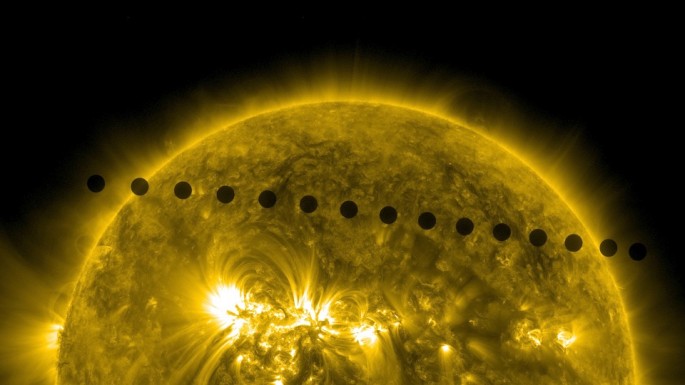Only twice every 115 years, Venus passes between Earth and the sun where researchers have taken this opportunity to study closer this transit to examine and learn more about the various atmospheric layers of Venus.
This new study details how researchers examined a recent Venus transit in order to conduct an analysis of the various elements found in the planet's atmosphere along with their compositions. Various elements also react differently to light which is why scientists have measured how they absorb sunlight when they pass through Venus' atmosphere to explore the different kinds of molecules present.
This data will be pivotal for future Venus missions where atmospheric elements and compounds can affect the drag of a spacecraft upon entering the atmosphere.
Scientists used images from NASA's Solar Dynamics Observatory and the Japanese Aerospace Exploration Agency and NASA's Hinode mission for this new study.
According to lead author of the study Fabio Reale from the University of Palermo, learning about the atmospheric composition of the atmosphere of Venus is crucial for the braking process of the spacecraft when it enters the upper atmosphere, called aerobreaking.
Throughout the entire transit period, only the sides of the atmosphere of Venus were observed, however, scientists still consider them highly interesting. Apparently, these areas transform from day into night and vice versa where these transition regions can produce unique effects in the ionosphere. Scientists reveal that these two transition areas are almost identical.
According to co-author of the study Dean Pesnell who is a project scientist at NASA's Goddard Space Flight Center, Venus appeared to be very round in all its wavelengths where if the transition from day to night was any different from night to day, this would mean a bulge in the atmosphere found in one side of the planet.
This Venus transit investigation can also aid in future research on planets and their host stars since exoplanets are usually revealed during transits such as this one. Further study and examination of closer planets in transit can also provide better clues how to analyze exoplanets and their atmospheres, to determine if they are hospitable for life.
This study is published in the journal, Nature Communications.



























